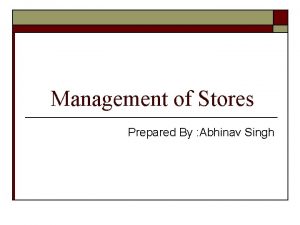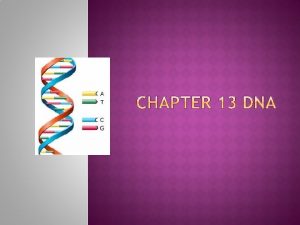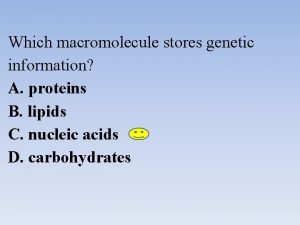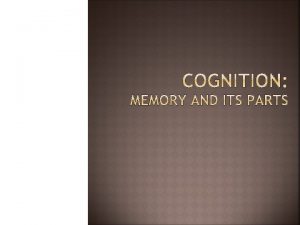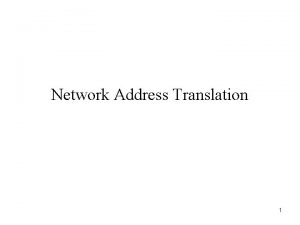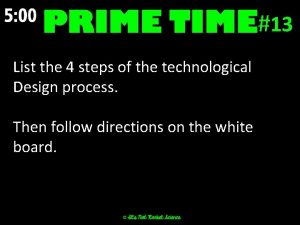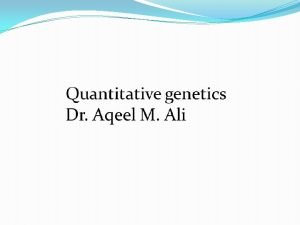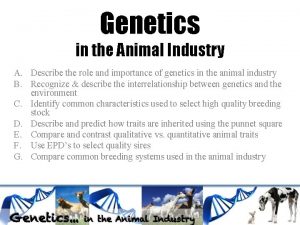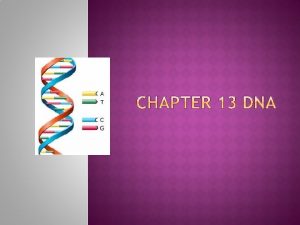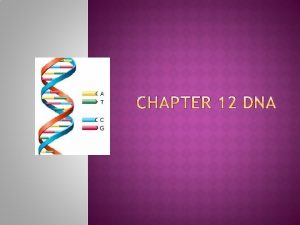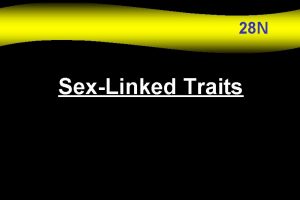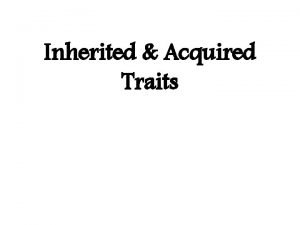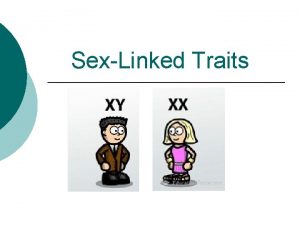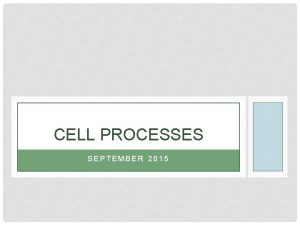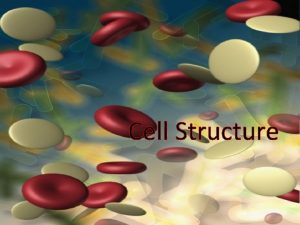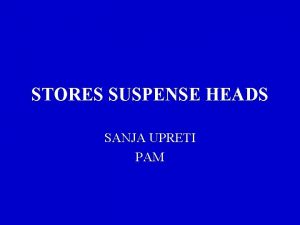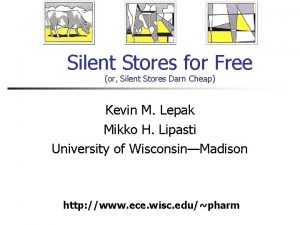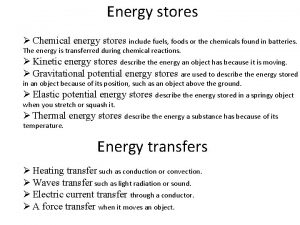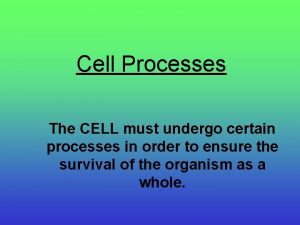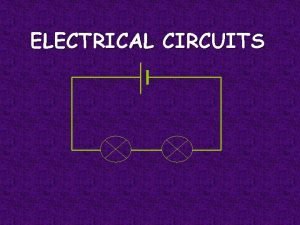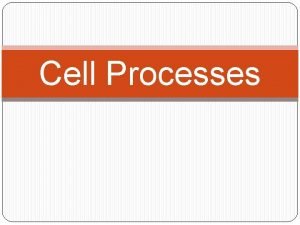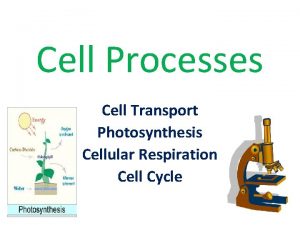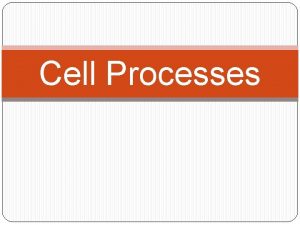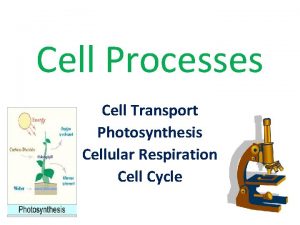Stores information needed for traits and cell processes




























- Slides: 28


� Stores information needed for traits and cell processes � Copying information needed for new cells � Transferring information from generation to generation



� Watson and Crick’s discovery of DNA’s structure (double helix) was based on almost fifty years of research by other scientists

� Made of nucleotides (3 parts) �Sugar (deoxyribose) �Phosphate group �Base (nitrogenous base) A (adenine) T (thymine) C (cytosine) G (guanine)

� Chargaff discovered that the percent of adenine and thymine in DNA were the same. � The percent of guanine and cytosine are also equal. � The observation that [A] = [T] and [G] = [C] became known as one of “Chargaff’s rules. ”

� Rosalind Franklin (1950) – used X-ray diffraction (aimed X-rays at DNA and looked at the scatter pattern) to find clues about the structure �Showed DNA has 2 strands �The DNA strands are twisted around each other like a spring (helix shaped) �The bases are in the center �Died at age 37 from cancer (x-ray exposure? )

� Watson and Crick – built models of DNA �Discovered the double helix structure (2 strands twist around each other like staircases) �Explained Franklin’s and Chargaff’s earlier discoveries �Discovered that hydrogen bonds hold the DNA strands together Weak forces that enable the DNA to come apart

� Adenine pairs with Thymine � Guanine pairs with Cytosine

� Before a cell divides, it duplicates its DNA in a copying process called replication � This process ensures that each resulting cell has the same complete set of DNA molecules

� How does the double helix structure of DNA make replication (copying) possible? ? ? �Each strand of the double helix has all the information needed to reconstruct the other half by the mechanism of base pairing. �Because each strand can be used to make the other strand, the strands are said to be complementary

� The DNA molecule separates into two strands and then produces two new complementary strands following the rules of base pairing. � Each strand of the double helix of DNA serves as a template, or model, for the new strand.

� The two strands of the double helix separate, or “unzip, ” allowing two replication forks to form. � New bases are added following the rules of base pairing (A-T and C-G) to the newly forming strand.

� Each DNA molecule has one original strand one new strand (semi-conservative). � The result of replication is two DNA molecules identical to each other and to the original molecule.


A A DNA molecule is double-stranded. The two strands of DNA stay zippered up together because they are complementary: their nucleotides match up according to base-pairing rules (G to C, T to A). B As replication starts, the two strands of DNA are unwound. In cells, the unwinding occurs simultaneously at many sites along the length of each double helix. C Each of the two parent strands serves as a template for assembly of a new DNA strand from free nucleotides, according to base-pairing rules (G to C, T to A). Thus, the two new DNA strands are complementary in sequence to the parental strands. D DNA ligase seals any gaps that remain between bases of the “new” DNA, so a continuous strand forms. The base sequence of each half-old, half-new DNA molecule is identical to that of the parent DNA molecule. Stepped Art Fig. 13 -6, p. 208

� DNA replication is carried out by enzymes. � DNA helicase �Breaks � DNA polymerase �Joins � DNA free nucleotides into a new strand of DNA ligase �Joins � hydrogen bonds between DNA strands DNA segments on discontinuous strand


� Computer animation of DNA Replication 2 minutes � 4 minute DNA REPLICATION � 2 minutes detailed DNA replication � Bozeman Biology

� Draw, label and explain DNA replication � Include the following terms �Nucleotide �A, (deoxyribose, base, phosphate) T, C, G �DNA polymerase �DNA ligase �DNA helicase � 3’end and 5’end �Continuous replication and discontinuous replication �Old strand new strand �Okazaki fragments �Semi-conservative replication

� Draw, label and explain DNA replication � Include the following terms �Nucleotide �A, (deoxyribose, base, phosphate) T, C, G �DNA polymerase �DNA ligase �DNA helicase � 3’end and 5’end �Continuous replication and discontinuous replication �Old strand new strand �Okazaki fragments �Semi-conservative replication

� DNA repair mechanisms �DNA polymerases proofread DNA sequences during DNA replication and repair damaged DNA � When proofreading and repair mechanisms fail, an error becomes a mutation – a permanent change in the DNA sequence

� The tips of chromosomes are known as telomeres � Telomeres are hard to copy. DNA may be lost from telomeres each time a chromosome is replicated. � An enzyme (telomerase) adds short, repeated DNA sequences to telomeres, lengthening the chromosomes and making it less likely important gene sequences will be lost during replication.


� 1997 Dolly News Story � GMA Pet Cloning

� Bringing Them Back To Life – Read the article and answer the questions on the next slide.

� Read the entire article then answer the following in complete sentences. Synthesize information from the entire article to answer the questions completely. Incomplete answers will only receive partial credit. � 1) Have we been able to “bring an extinct species back to life”? If so, what was it and what was the result? � 2) Do scientists think we will be able to bring a dinosaur back to life? Why or why not? � 3) Discuss the benefits of de-extinction. In other words, why would we want to bring extinct species back to life? � 4) What are some challenges of bringing a mammoth back to life? What is the procedure researchers would use to bring it back to life? � 5) Explain why some people do not think scientists should try to revive extinct species? � 6) Do you think that research should be done to recreate extinct species? Support your answer using support from the article.
 Concept of store management
Concept of store management Cell processes
Cell processes Concurrent in os
Concurrent in os Store and transmit hereditary
Store and transmit hereditary Which macromolecule stores energy
Which macromolecule stores energy Encodes stores and retrieves information
Encodes stores and retrieves information To avoid confusion the gridline system omits the letters
To avoid confusion the gridline system omits the letters Nat device stores state information in translation table.
Nat device stores state information in translation table. Which macromolecule stores our genetic information? *
Which macromolecule stores our genetic information? * Are used by vb to hold information needed by an application
Are used by vb to hold information needed by an application Hsc multiple choice generator
Hsc multiple choice generator Quantitative and qualitative traits
Quantitative and qualitative traits Qualitative traits vs quantitative traits
Qualitative traits vs quantitative traits Qualitative traits vs quantitative traits
Qualitative traits vs quantitative traits Neuronal pools are collections of
Neuronal pools are collections of Denuding tower
Denuding tower Prokaryotic and eukaryotic cells
Prokaryotic and eukaryotic cells Plant cell animal cell venn diagram
Plant cell animal cell venn diagram Tonoplast
Tonoplast Animal and plant cell diagram
Animal and plant cell diagram Primary source batteries
Primary source batteries Difference between plant and animal cell
Difference between plant and animal cell Events of the cell cycle
Events of the cell cycle Life
Life Chapter 4 cell theory and cell study
Chapter 4 cell theory and cell study Idealized animal cell
Idealized animal cell Walker cell and hadley cell
Walker cell and hadley cell Cell cycle and cell division
Cell cycle and cell division Venn diagram animal and plant cells
Venn diagram animal and plant cells
